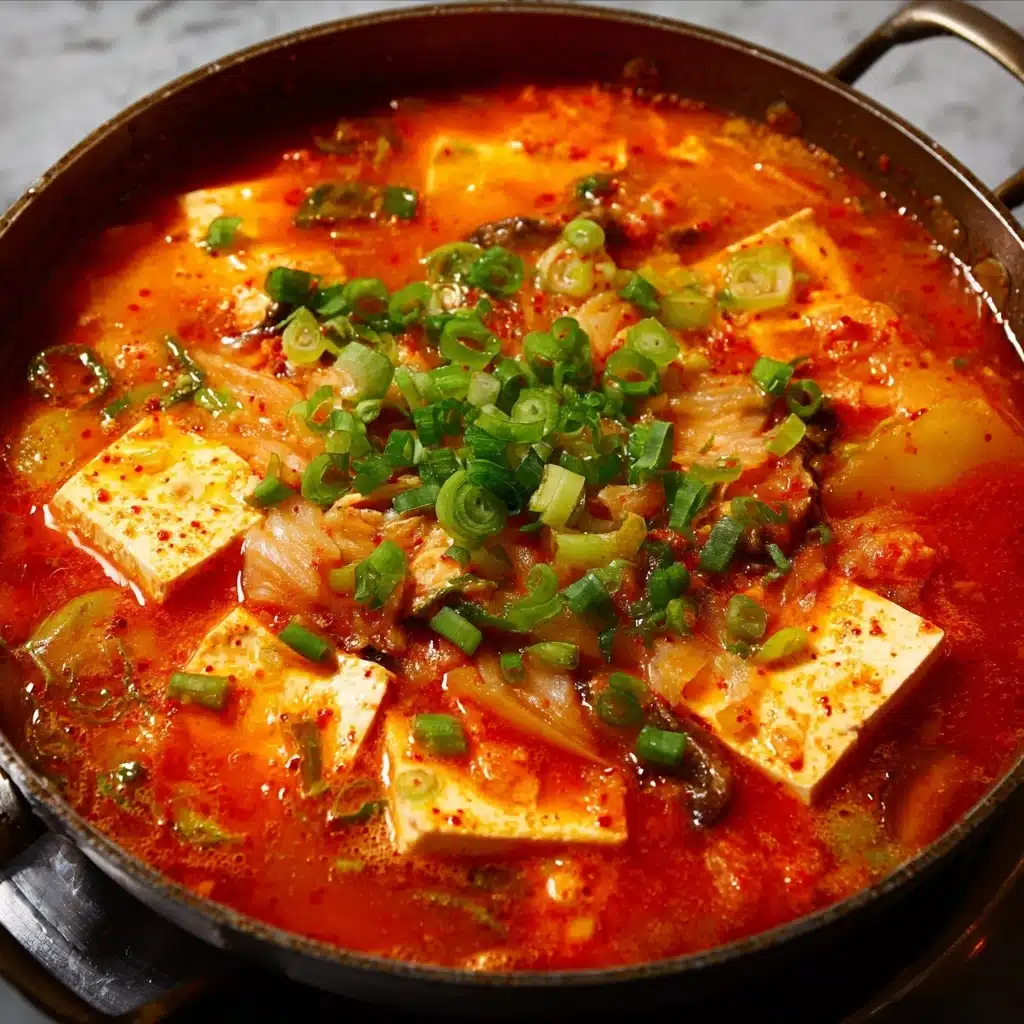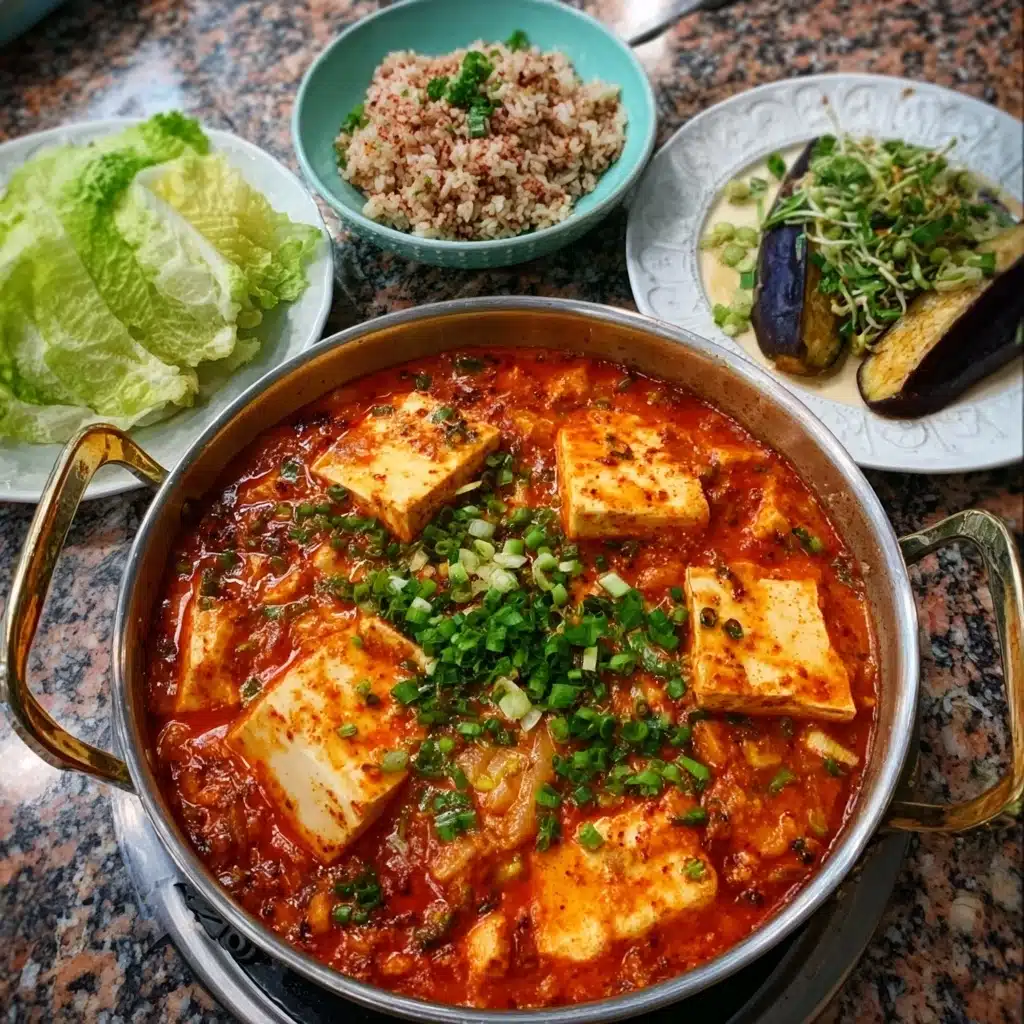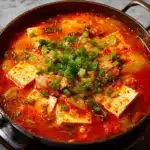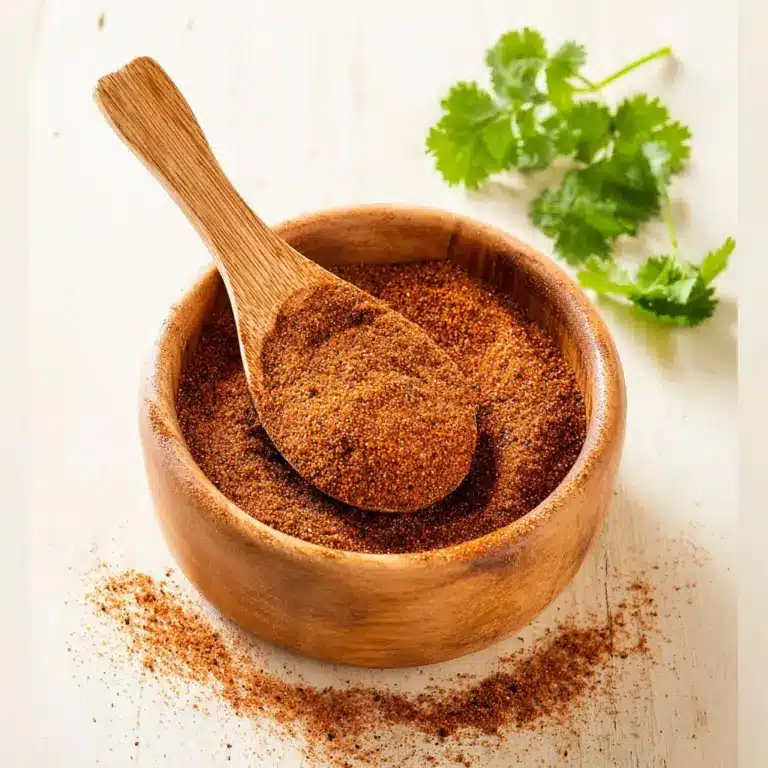Korean Soup Kimchi Jjigae (Kimchi Stew) Recipe
If you’re searching for a dish that feels like a warm embrace on a chilly day, look no further than the Korean Soup Kimchi Jjigae (Kimchi Stew). This hearty, spicy stew brings together the deep, tangy essence of aged kimchi with tender pork belly, creating a symphony of flavors that dance on your palate. Every spoonful is packed with comforting heat, rich umami, and a satisfying texture that makes this stew a beloved staple in Korean homes and now, hopefully, in yours too.

Ingredients You’ll Need
Gathering the right ingredients for Korean Soup Kimchi Jjigae (Kimchi Stew) is wonderfully simple, yet each component plays a crucial role in building the stew’s bold flavor and rich texture. These essentials come together effortlessly to create that iconic balance of spicy, savory, and slightly sour notes.
- Aged kimchi: The star of the stew, its deep fermented flavors provide the signature tang and complexity you’re after.
- Pork belly (200 grams): Adds a luscious, meaty richness and a bit of crispy texture when sautéed first.
- Onion (1 medium): Sliced onions bring sweetness and a mellow undertone that balances the spice.
- Gochugaru (1 tablespoon): Korean red pepper flakes add warmth and vibrant spiciness, crucial for authentic flavor.
- Water (4 cups): The stew’s base, gently melding everything together and creating the perfect broth.
How to Make Korean Soup Kimchi Jjigae (Kimchi Stew)
Step 1: Prepare and Sauté the Pork Belly
Start by slicing your pork belly into bite-sized pieces. Heat up your pot and sauté the pork until it turns irresistibly crispy and golden. This step not only seals in the flavor but also gives the stew a delightful texture contrast between tender meat and crispy edges.
Step 2: Add Kimchi and Gochugaru
Once the pork is beautifully browned, toss in the aged kimchi and sprinkle the gochugaru over it. Stir everything together so the pork and kimchi meld with the pepper flakes, encouraging the aromatic spice to permeate throughout the dish. This builds the stew’s foundation of bold, tangy heat.
Step 3: Introduce the Onion and Simmer
Now, add the sliced onion to the pot, stirring for just a minute to soften it slightly. Then pour in four cups of water, bringing the mixture to a lively boil. Once boiling, reduce the heat to a gentle simmer and let it cook uncovered for about 20 to 30 minutes. This slow simmer tenderizes the pork belly and melds the flavors into a harmoniously spicy, savory broth.
How to Serve Korean Soup Kimchi Jjigae (Kimchi Stew)

Garnishes
Add a sprinkle of sliced green onions or a few fresh chili slices on top just before serving to introduce a refreshing crunch and a touch of color. These subtle garnishes elevate the presentation and offer a bright contrast to the deep rich flavors of the stew.
Side Dishes
Kimchi jjigae is traditionally enjoyed with a bowl of steamed white rice to soak up the spicy, flavorful broth. Pair it with simple Korean banchan such as pickled radishes or seasoned spinach to complement the stew’s zest and provide variety to your meal.
Creative Ways to Present
For a fun twist, serve the Korean Soup Kimchi Jjigae (Kimchi Stew) in individual stone bowls to keep it piping hot longer, just like in Korean restaurants. You can also add soft tofu cubes or mushrooms to customize the stew, inviting guests to personalize their bowls for a communal, hands-on experience.
Make Ahead and Storage
Storing Leftovers
After enjoying your hearty stew, store any leftovers in an airtight container in the refrigerator. The flavors actually deepen overnight, making your second serving even more delicious within 2 to 3 days.
Freezing
If you want to keep Korean Soup Kimchi Jjigae (Kimchi Stew) for longer, freezing works beautifully. Portion it into freezer-safe containers, leaving some space for expansion. It freezes well for up to 1 month and can be a wonderful quick meal when reheated.
Reheating
To reheat, thaw the frozen stew in the fridge overnight if frozen. Warm it up gently on the stove over medium-low heat, stirring occasionally until the stew is heated through and the flavors are revived. Avoid using the microwave to keep the texture just right.
FAQs
Can I use fresh kimchi instead of aged kimchi for Korean Soup Kimchi Jjigae (Kimchi Stew)?
While fresh kimchi can be used, aged kimchi provides a more complex, deeper flavor that is essential for authentic Korean Soup Kimchi Jjigae. If using fresh, consider letting it ferment a bit longer or adjusting the seasoning accordingly.
Is it possible to make this stew vegetarian or vegan?
Absolutely! You can substitute the pork belly with tofu or mushrooms and use vegetable broth instead of water. Adding fermented soybean paste can enhance the umami without compromising the stew’s integrity.
What’s the best way to control the spiciness?
If you prefer a milder stew, reduce the amount of gochugaru or omit extra chili garnishes. The softness of the pork and the tang of kimchi will still shine beautifully.
Can I add other proteins like seafood?
Definitely! Korean Soup Kimchi Jjigae (Kimchi Stew) is versatile and tastes amazing with additions like tuna, clams, or shrimp. Just add them towards the end of cooking to avoid overcooking.
Why does the stew sometimes taste sour?
The slight sourness comes from the fermentation of aged kimchi, which intensifies with time. It’s a signature flavor that gives Korean Soup Kimchi Jjigae its unique character and delightful tanginess.
Final Thoughts
There’s something truly special about making and sharing Korean Soup Kimchi Jjigae (Kimchi Stew). Its spicy, savory, and soul-warming qualities make it perfect for any occasion, whether a cozy solo meal or a festive gathering. I wholeheartedly encourage you to dive in and savor this classic Korean comfort food that never fails to bring smiles and warmth to the table.
PrintKorean Soup Kimchi Jjigae (Kimchi Stew) Recipe
Kimchi Jjigae is a traditional spicy Korean stew made with aged kimchi and pork belly, delivering a rich, comforting flavor. This hearty stew is perfect for warming the soul and is a staple in Korean cuisine, often enjoyed with rice and shared among family and friends. The fermentation of the kimchi adds depth and health benefits, while the gochugaru provides a vibrant spicy kick.
- Prep Time: 10 minutes
- Cook Time: 35 minutes
- Total Time: 45 minutes
- Yield: 4 servings 1x
- Category: Soup, Stew
- Method: Sautéing and simmering
- Cuisine: Korean
- Diet: Halal
Ingredients
Main Ingredients
- 1 cup aged kimchi, chopped
- 200 grams pork belly, sliced
- 1 medium onion, sliced
- 1 tablespoon gochugaru (Korean red pepper flakes)
- 4 cups water
Optional Ingredients
- 100 grams tofu, cubed (optional)
- 100 grams seafood (such as clams or shrimp) (optional)
Instructions
- Prepare the pork belly: Slice the pork belly into bite-sized pieces. Heat a pot over medium heat and sauté the pork belly until it becomes crispy and browned. This step adds a rich texture and flavor base to the stew.
- Add kimchi and gochugaru: Add the chopped aged kimchi and gochugaru to the pot with the pork. Stir well to mix the spicy flavors and allow the kimchi to release its aroma, cooking for about 3–5 minutes.
- Add onion: Add the sliced onion to the pot and stir to combine, allowing the onion to soften slightly and add sweetness to the stew.
- Pour water and boil: Pour in 4 cups of water and bring the stew to a boil. Once boiling, reduce the heat to low and let the mixture simmer gently.
- Simmer to develop flavors: Let the stew simmer for 25–30 minutes. This slow cooking will tenderize the pork and allow the flavors of the kimchi and spices to meld richly.
- Add optional ingredients: If using tofu or seafood, add them during the last 10 minutes of simmering, gently stirring to combine and ensure they cook through without breaking apart.
- Final taste adjustment and serve: Taste the stew and adjust seasoning if necessary, then ladle into bowls and serve hot, ideally with steamed rice or other Korean side dishes.
Notes
- Use aged kimchi for the best flavor as fresh kimchi will not provide the same depth.
- Pork belly can be substituted with other cuts like pork shoulder or even beef for variation.
- Adjust gochugaru quantity to control the spice level according to your preference.
- To make it vegetarian, omit pork and seafood, and increase tofu or mushrooms instead.
- Serve with steamed rice and Korean banchan (side dishes) for an authentic experience.
Nutrition
- Serving Size: 1 bowl (approximately 350 grams)
- Calories: 280 kcal
- Sugar: 3 g
- Sodium: 900 mg
- Fat: 18 g
- Saturated Fat: 6 g
- Unsaturated Fat: 10 g
- Trans Fat: 0 g
- Carbohydrates: 9 g
- Fiber: 2 g
- Protein: 18 g
- Cholesterol: 55 mg
Keywords: Kimchi jjigae, Korean stew, Kimchi soup, spicy Korean stew, Korean comfort food, pork kimchi stew








